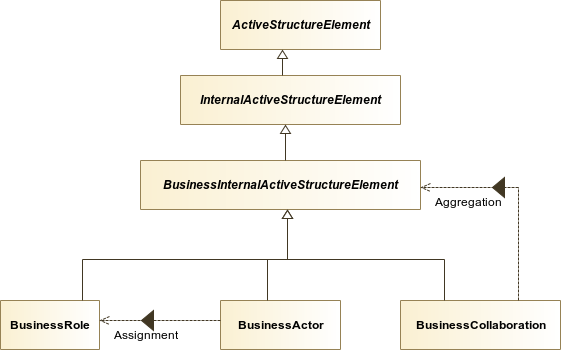
ArchiMate Metamodel
The active structure aspect of the Business Layer refers to the static structure of an organization, in terms of the entities that make up the organization and their relationships.
The active entities are the subjects (e.g., business actors or business roles) that perform behavior such as business processes or functions (capabilities).
Business actors may be individual persons (e.g., customers or employees), but also groups of people (organization units) and resources that have a permanent (or at least long-term) status within the organizations. Typical examples of the latter are a department and a business unit.
The element of business interface is introduced to explicitly model the (logical or physical) places or channels where the services that a role offers to the environment can be accessed. The same service may be offered on a number of different interfaces; e.g., by mail, by telephone, or through the Internet. In contrast to application modeling, it is uncommon in current Business Layer modeling approaches to recognize the business interface element.
In the Business Layer, three types of internal active structure element are defined: business actor, business role, and business collaboration.

Class | Summary |
|---|---|
A business actor is a business entity that is capable of performing behavior. | |
A business collaboration is an aggregate of two or more business internal active structure
elements that work together to perform collective behavior. | |
A business interface is a point of access where a business service is made available to the
environment. | |
A business role is the responsibility for performing specific behavior, to which an actor can be assigned, or the part an actor plays in a particular action or event. |